Have you stood in front of a mirror and wondered if someone is spying on you?
In this article, we’ll show you several easy techniques for detecting a two way mirror.
A two way mirror is a transparent mirror that can look exactly like a regular mirror when the back side of it is dark. Don’t worry, there is more than one way to tell the difference!
Techniques
We have a series of three tests to use to confirm that the mirror you see in front of you is not a two way mirror.
Test #1: The Fingernail Test
The Fingernail Test Rules Out the Glass Two Way Mirror
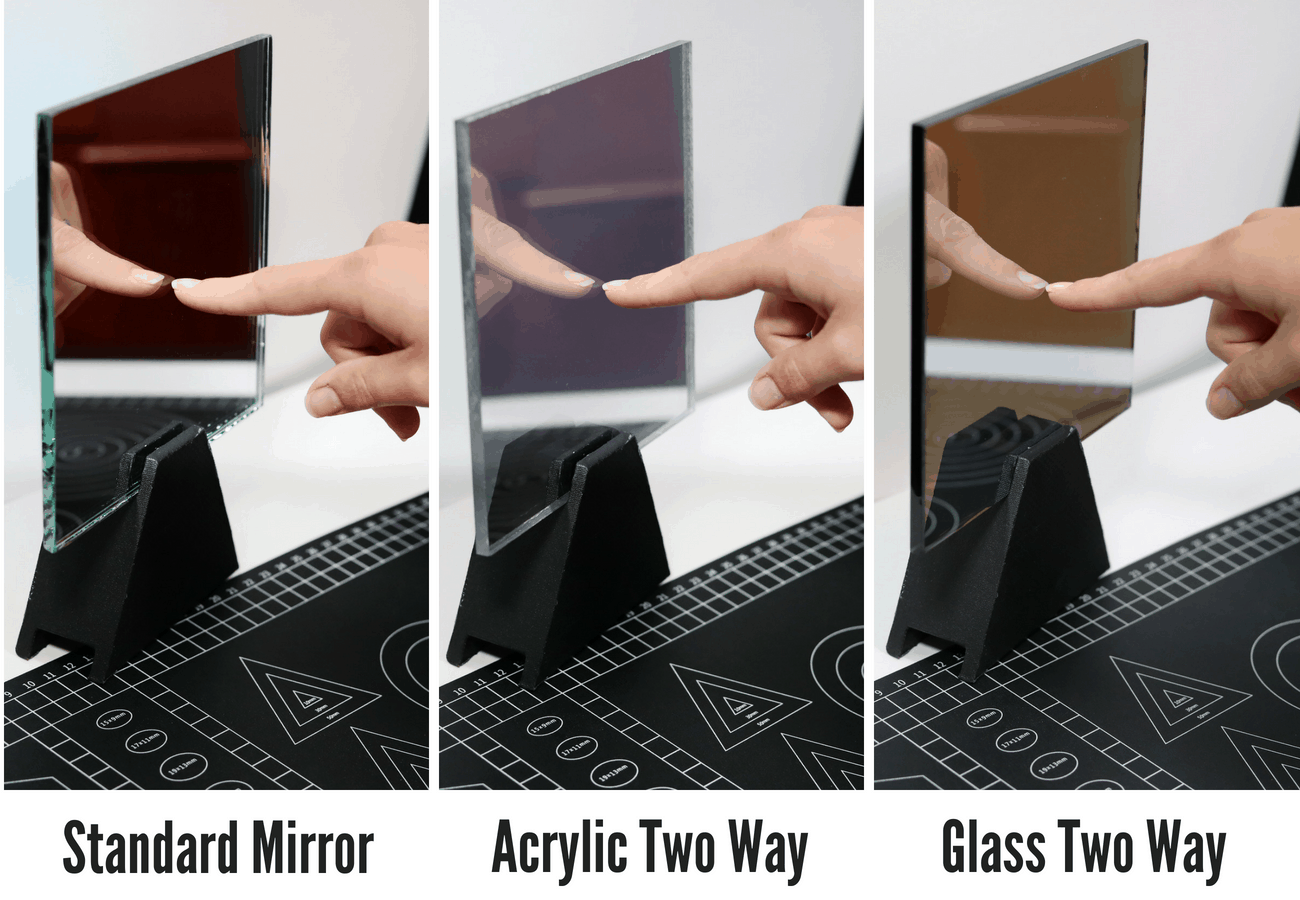
More on the Glass Two Way Mirror
The glass two way mirror has a mirror coating that is 70% reflective. It only allows 11% of the light through the mirror. It is on a dark grey substrate, which makes it one-directional. The glass two-way mirror cannot cheat the fingernail test. The reflection coating must be facing the room that is being observed. That way the people being observed are only seeing their reflection. On the opposite side, the darker room is located where the observer will be watching.
Notice the fingertip’s reflection touching itself. Very different from that of the standard mirror’s reflection.
The light is even on both sides of the mirror in this picture. You are able to see through the semi-transparent glass at the moment.
Glass two-way mirror cannot cheat the fingernail test. The reflection coating must be facing the room that is being observed. That way the people being observed are only seeing their reflection. On the opposite side, the darker room is located where the observer will be watching.
Test #2: Tint Comparison
Bring a Small Makeup Mirror With You
More on the Acrylic Two Way Mirror
70% reflective with 25% light transmission on a grey substrate, acrylic two way mirror is reflective from both sides of the substrate. Meaning it can be installed either way. If installed backwards ( the coated side on the back ) it can cheat the fingernail test looking like the reflection of a standard mirror! Something to think about if you are testing a questionable mirror. Acrylic tends to have a different feel than glass. Rubbing your nail gently across the surface may help you determine if you have found an acrylic two way mirror, or a standard glass mirror.
Acrylic two way mirror will closer match the reflection tint of a standard mirror as well. Whereas glass two way mirror tends to have a bronze tint.
More on the Glass Smart Mirror
Smart mirror is similar to the acrylic two way mirror in properties. It has a 70% reflection with a 25% light transmission. Its reflective from both sides of the substrate. Smart mirror can be installed backwards as well ( the coated side on the back ) it can cheat the fingernail test looking like the reflection of a standard mirror!
If you are testing a questionable mirror, smart mirror tends to have a warmer tone on the reflective coating. Observe the smart mirror on the right compared to the standard mirror reflection of the mug on the left.

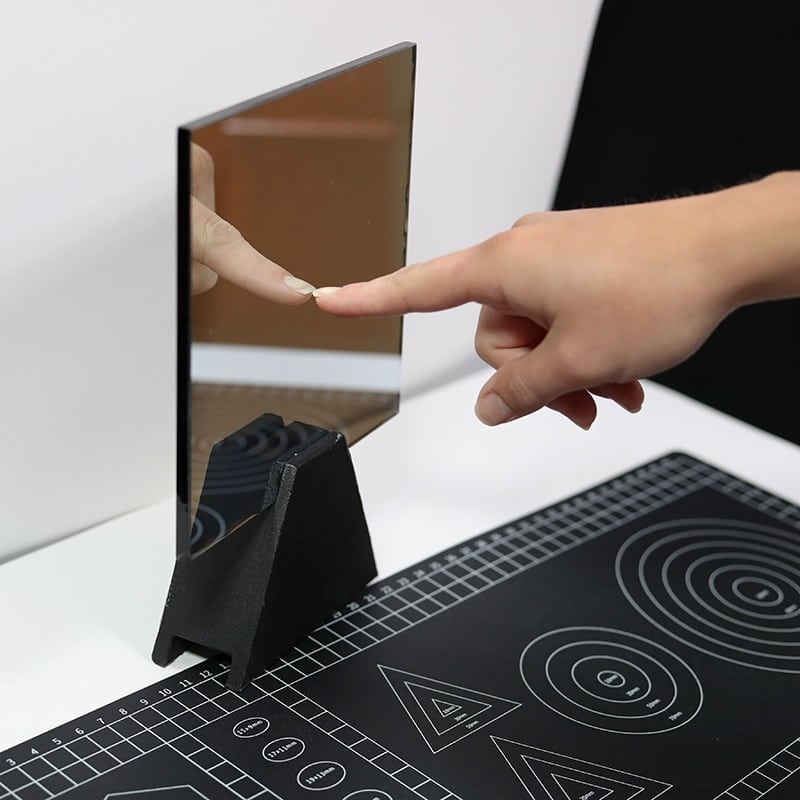
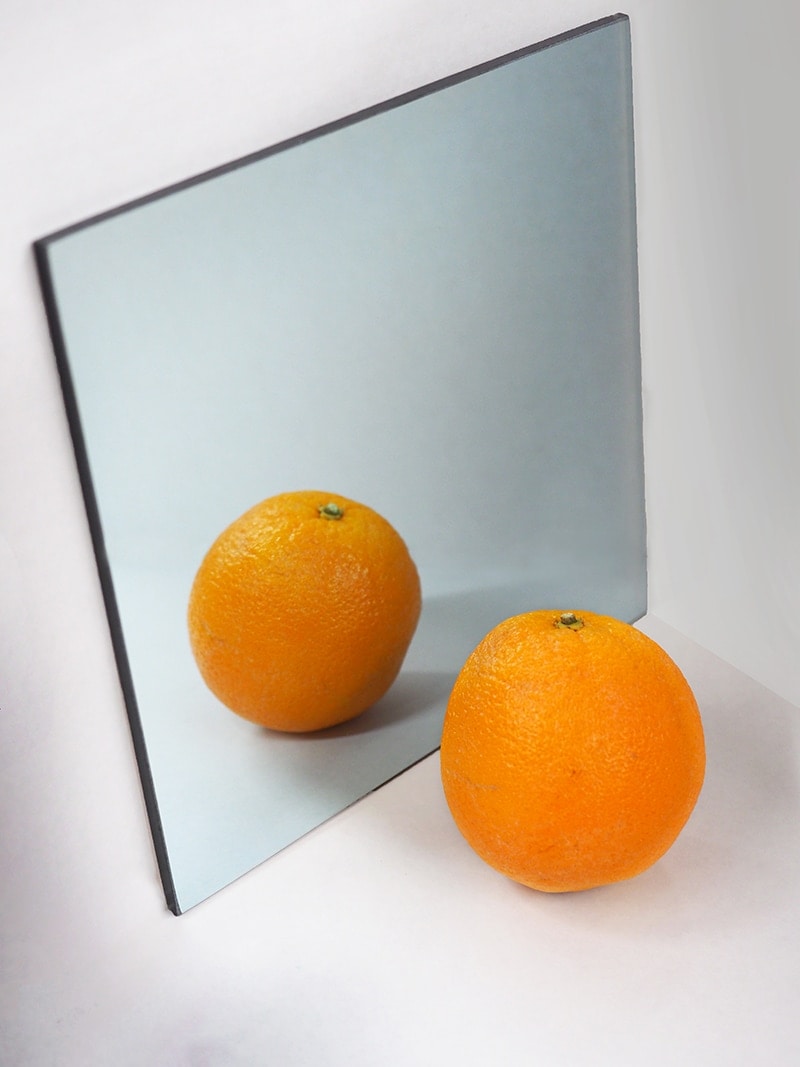
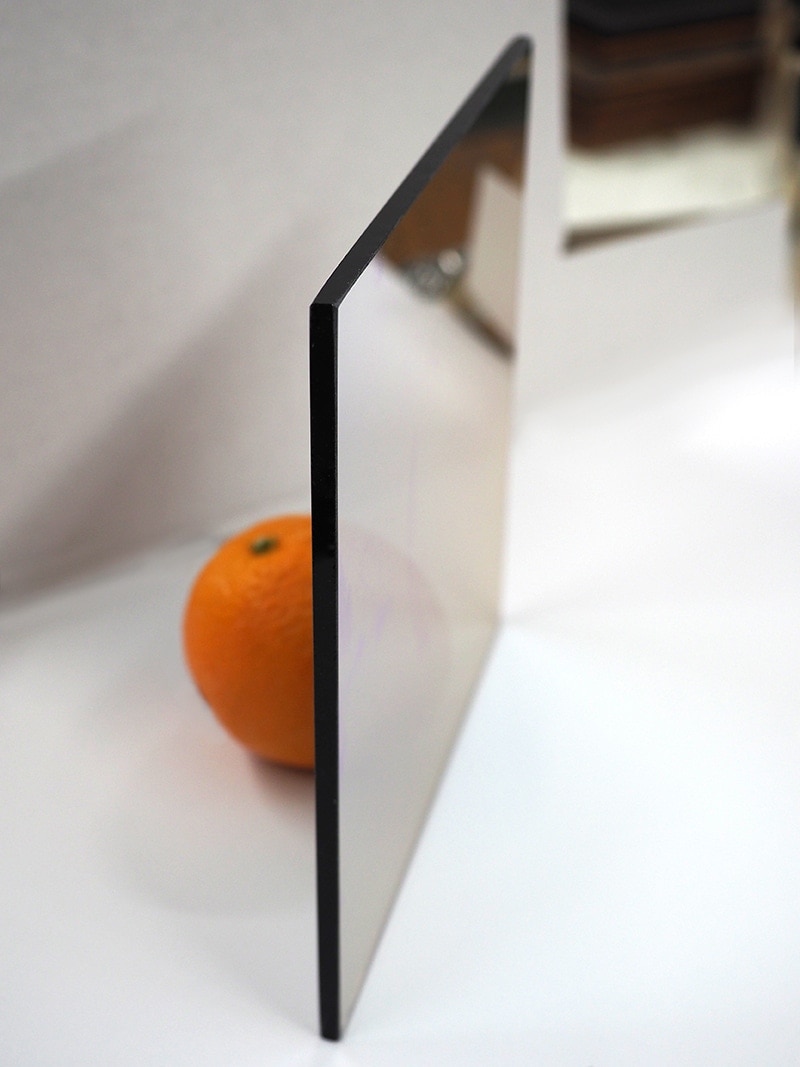
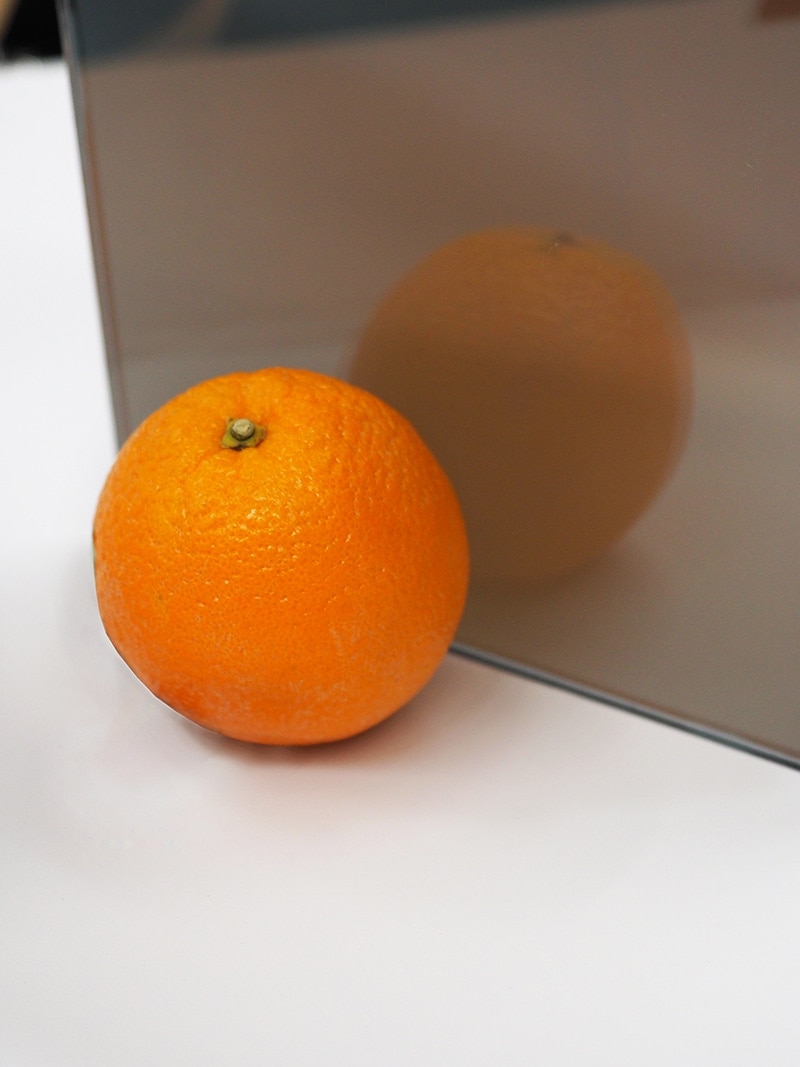
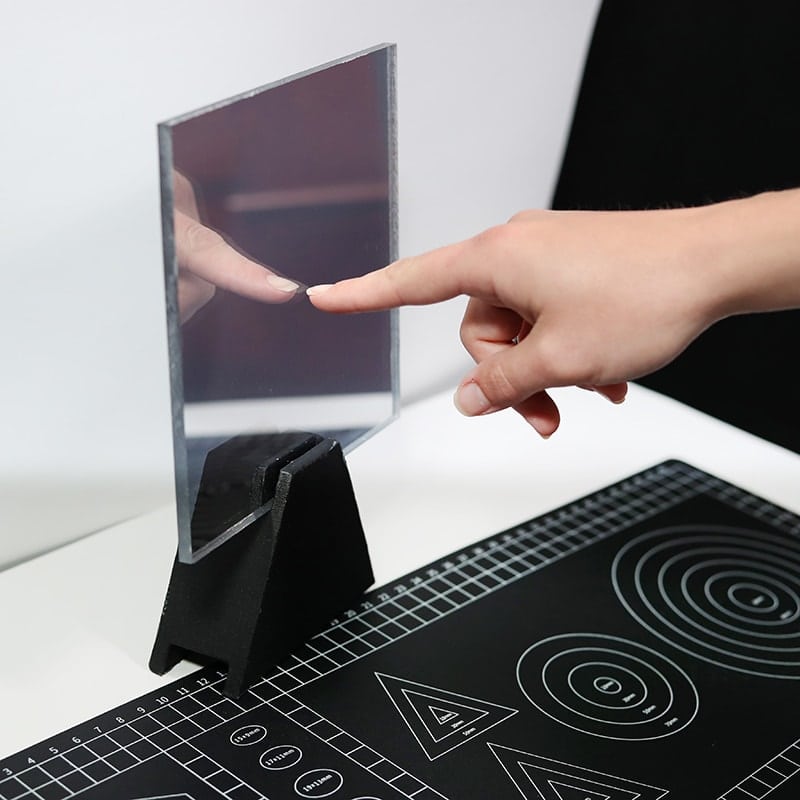
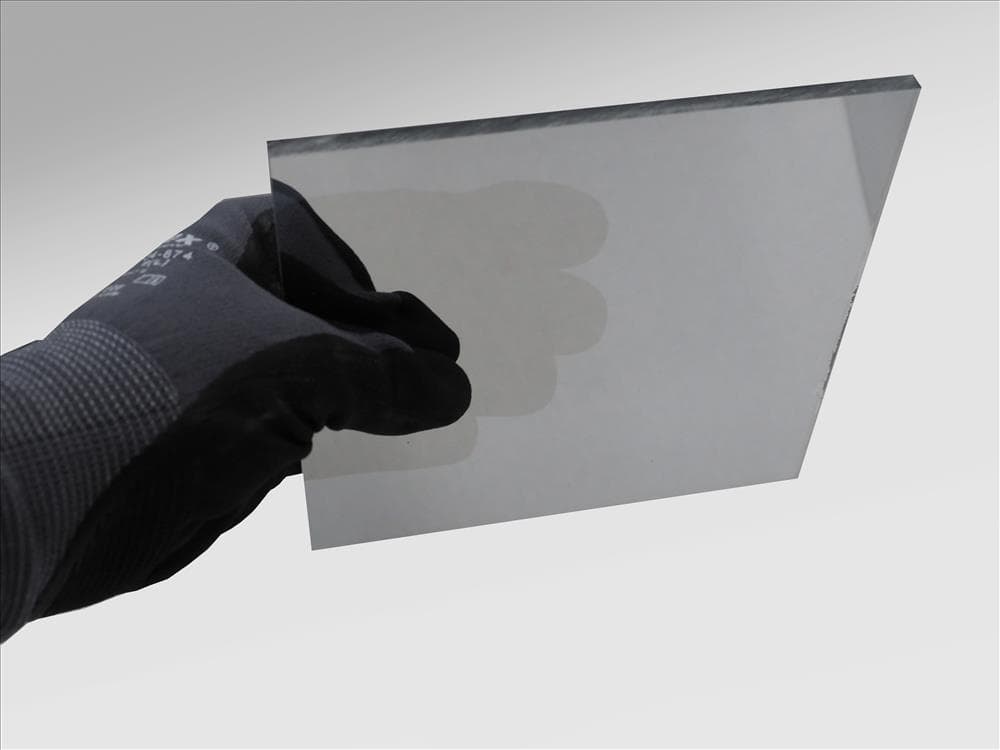
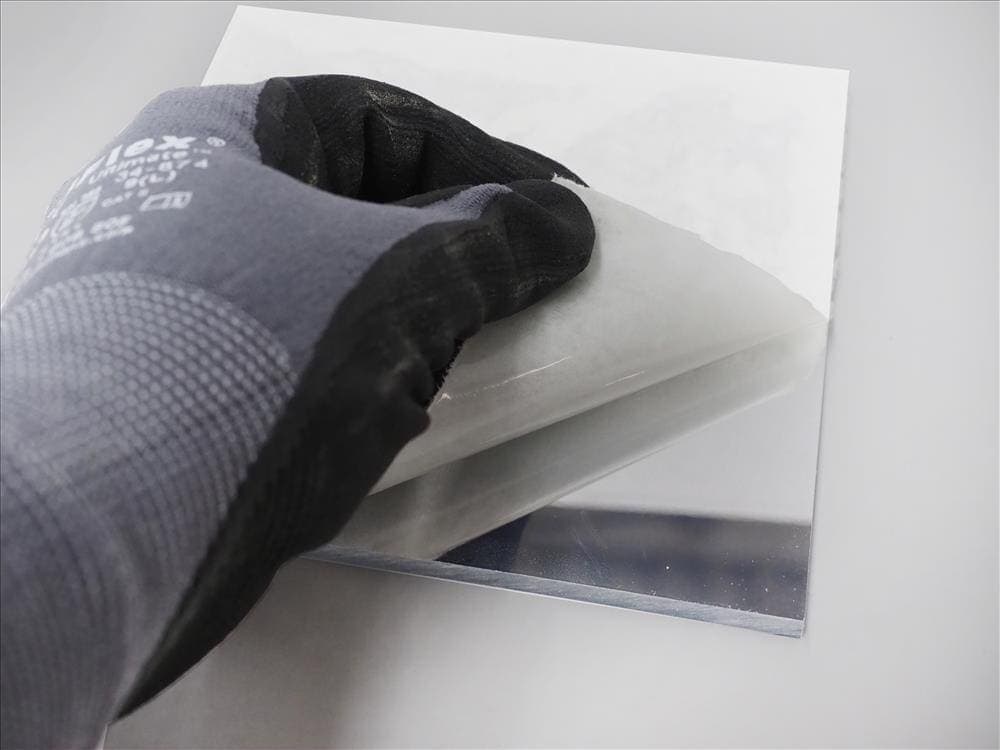
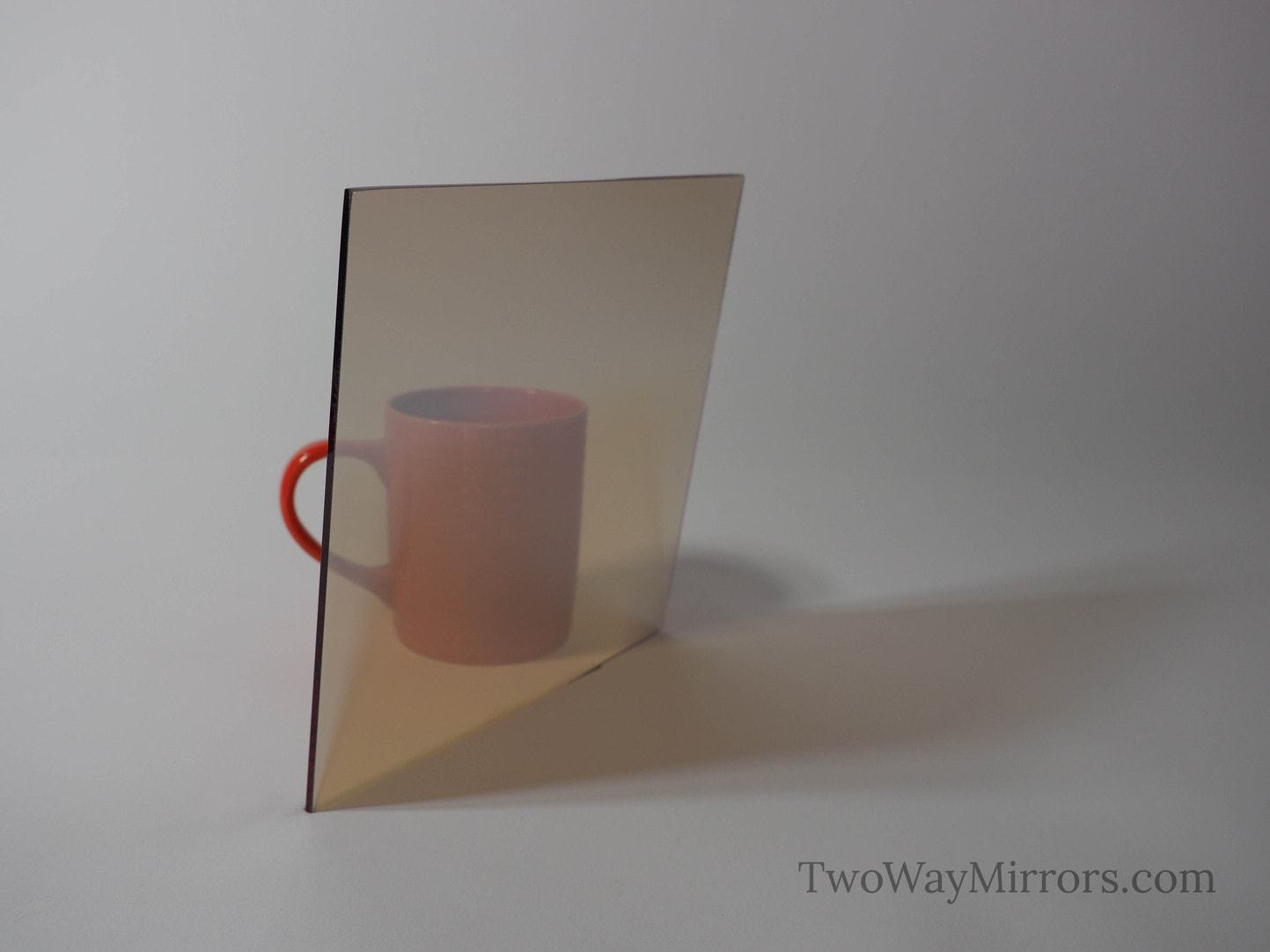
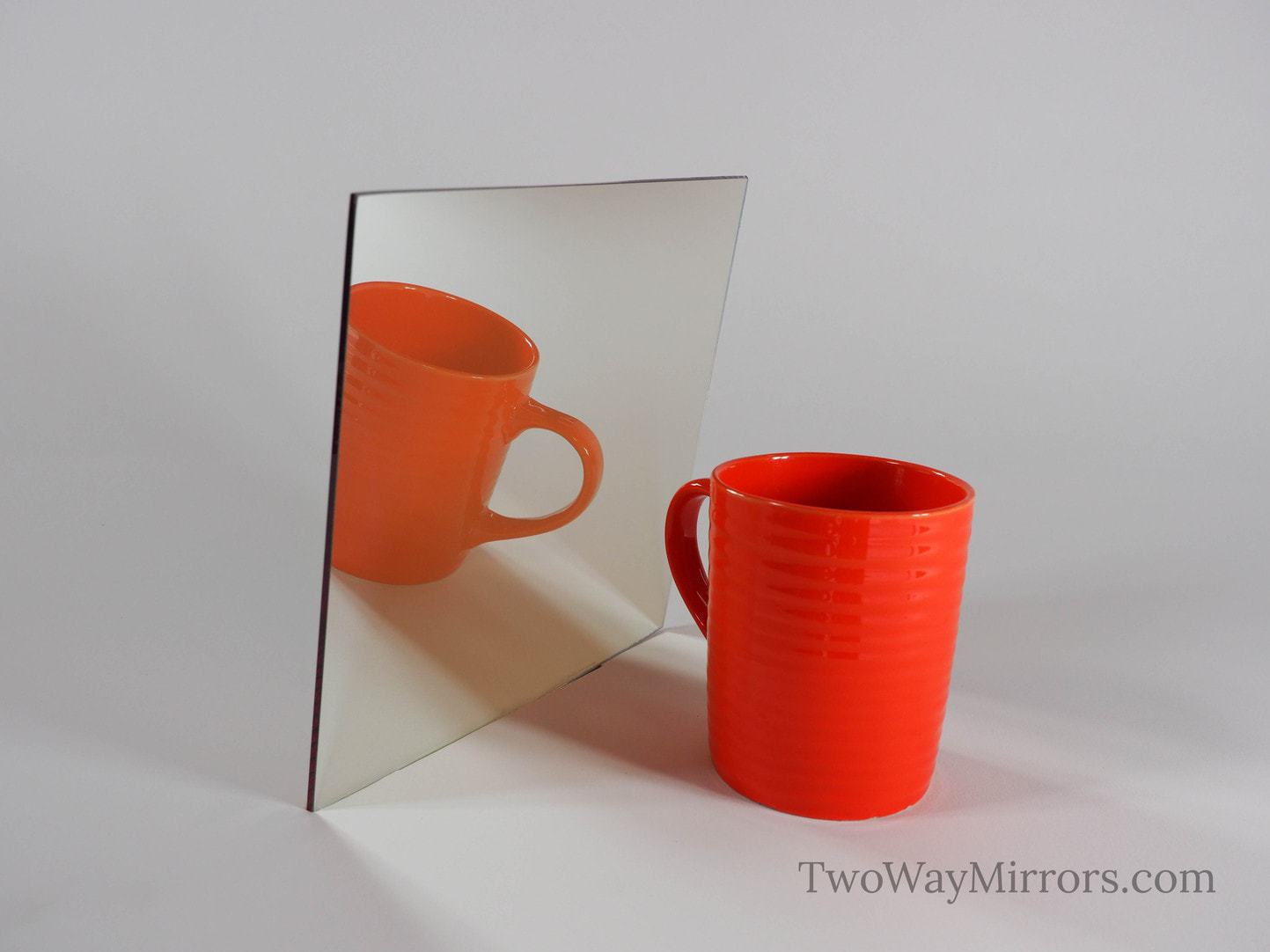
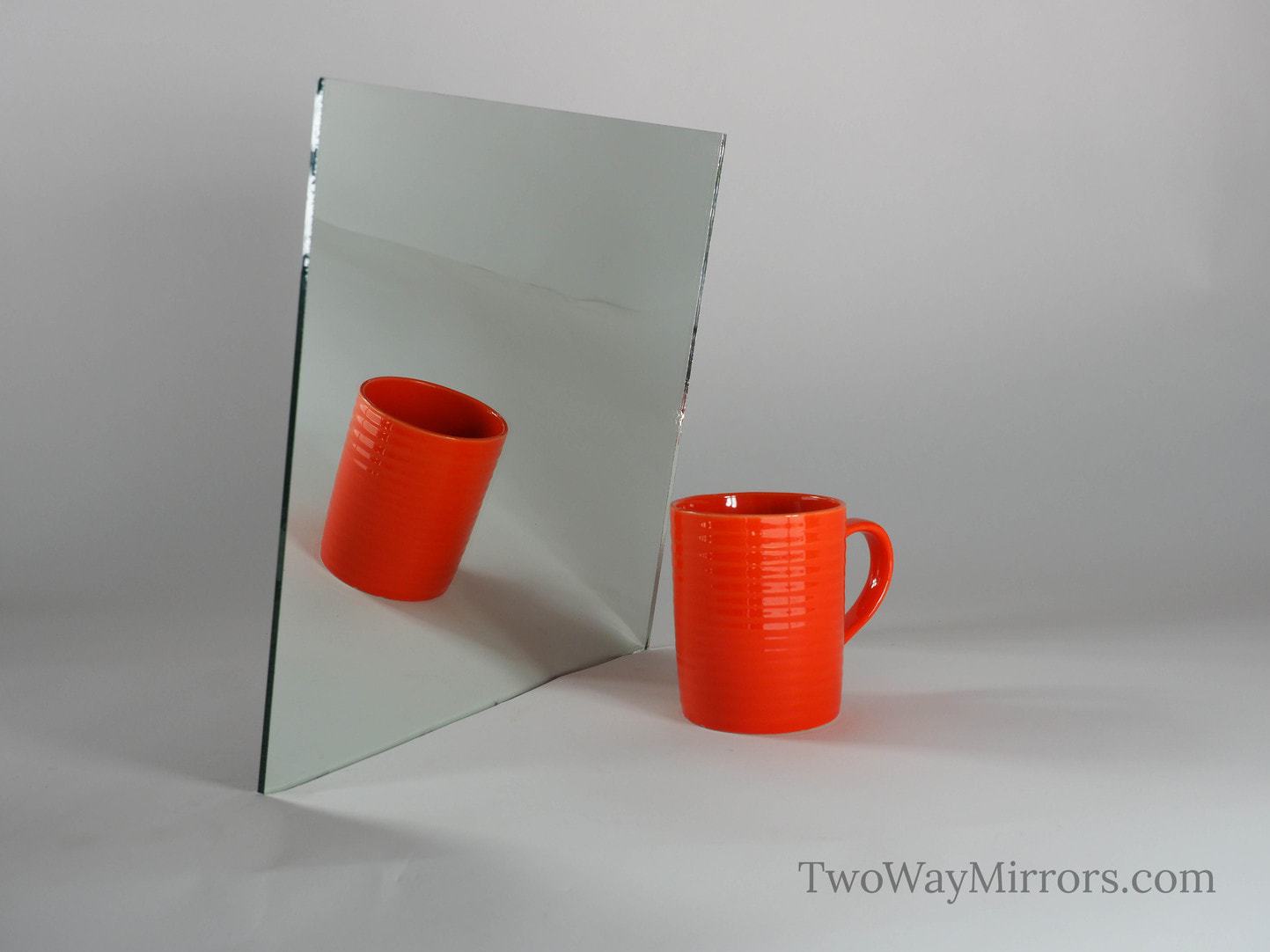
As there are lots of ways to detect the two ways mirror as this mirror can be detected easily by touching the nails and by fingerprints easily without any hassle you can detect the two-way mirror. As there are too many ways to which can be easily detect the two-way mirror but these are the correct and easy way to detect the mirror.
Ok girly
Hi, you have an extraordinary artfulness recorded as a hard copy the websites. Continue composing more on these lines. Appreciated perusing this, extraordinary bits of knowledge. Much obliged!
Thank you so much!
If you shine a laser through the dim side will it go through or reflect?
The laser will go through the mirror (some of the light may be reflected back as well).
Both and how much of each is going to be dependant mainly upon it’s reflective properties or the properties of the reflective coating. For instance let’s say the mirror’s reflective coating is rated at 74%. Very simply the laser , just as any light is only going to be able to emit 21% of it’s light while 74% is going to be reflective back into your side of the mirror. While I may have slightly over simplified my answer, there are a few other factors to consider. The color of the laser along with the color of the reflective coating is just one of these other factors to consider when calculating the amount of laser light that will, both, be reflected and just how much of your beam passes through. How powerful your laser is and the amount of time you allow your Lazer to stay focused on a particular spot on your mirror may also affect the amount of light that gets through…eventually that is. Because laser beams tend to be hot; if a beam is allowed to stay focused on a particular spot on your mirror the reflective coating material will eventual become vaporized and allow even more of its light to pass through.
Both and how much of each is going to be dependant mainly upon it’s reflective properties or the properties of the reflective coating of the mirror. For instance let’s say the mirror’s reflective coating is rated at 74%. Very simply the laser , just as with any other type of light is only going to be able to emit 21% of it’s light pas⁶6t the coating while 74% is going to be reflective back into your side of the mirror. While I may have slightly over simplified my answer, there are a few other factors to consider. The color of the laser along with the color of the reflective coating is just one of these other factors to consider when calculating the amount of laser light that will, both, be reflected and just how much of your beam passes through. If your lasers light beam color is red (lame) and the mirror’s coating has a red tint to it then your beam maty be reduce in the amount of light is allowed to pass-through in the red spectrum due to the filtering affect. Because the red tint will tend to absorb some or all of the red light trying to pass through thus decreasing, both, the reflective and pass through amounts of light
How powerful your laser is and the amount of time you allow your Lazer to stay focused on a particular spot on your mirror may also affect the amount of light that gets through…eventually after some amount of time that is. Because laser beams tend to be hot; and if a hot
beam is allowed to stay focused on a particular spot on your mirror the reflective coating material will eventually begin to degrade an become vaporized and allow even more of its light to pass through. While I did say that this could eventually happen over time there are many high powered lasers that could punch through this coating in an instance and some are impressive enough that thy could vaporize the glass mirror itself allowing 100% to pass-through regardless of your reflective coatings.
Both, how much of each is going to be dependant mainly upon it’s reflective properties or the properties of the reflective coating of the mirror. For instance let’s say the mirror’s reflective coating is rated at 74%. Very simply the laser , just as with any other type of light is only going to be able to emit 21% of it’s light pas⁶6t the coating while 74% is going to be reflective back into your side of the mirror. While I may have slightly over simplified my answer, there are a few other factors to consider. The color of the laser along with the color of the reflective coating is just one of these other factors to consider when calculating the amount of laser light that will, both, be reflected and just how much of your beam passes through. If your lasers light beam color is red (lame) and the mirror’s coating has a red tint to it then your beam maty be reduce in the amount of light is allowed to pass-through in the red spectrum due to the filtering affect. Because the red tint will tend to absorb some or all of the red light trying to pass through thus decreasing, both, the reflective and pass through amounts of light
How powerful your laser is and the amount of time you allow your Lazer to stay focused on a particular spot on your mirror may also affect the amount of light that gets through…eventually after some amount of time that is. Because laser beams tend to be hot; and if a hot
beam is allowed to stay focused on a particular spot on your mirror the reflective coating material will eventually begin to degrade an become vaporized and allow even more of its light to pass through. While I did say that this could eventually happen over time there are many high powered lasers that could punch through this coating in an instance and some are impressive enough that thy could vaporize the glass mirror itself allowing 100% to pass-through regardless of your reflective coatings.
Thank you for this! It’s super helpful AND timely, I will be using this tips for my own clients so that there MH Fine Hardware go smoothly. And thanks in advance for your time. I’m so excited I found your blog through this — it’s all so beautiful and the topics so well-organized/helpful!
Thank you!!
[…] a two-way mirror. If you’re short on time, here’s a quick answer to your question: The simplest way to spot a two-way mirror is to perform the fingernail test. If there’s a gap between your fingernail and its reflection, it’s likely a standard […]
[…] To do this test, simply pull out a standard mirror from your purse or pocket. Put it up next to the mirror and check to see if the tint looks the same as your … Read More […]
I think I’ll just cover all the mirrors in hotel rooms. No reason to put myself in a possible bad situation. Now I worry if the mirrors can swing open and someone come in while I sleep. Ok I may have watched too many movies! lol 😂
Hardness (scale):
Glass 5.5-7
Acrylic 2.5-3.5
As glass is significantly harder, it’s more resistant to scratching. Use a coin or keys to scratch the mirror – these shouldn’t scratch glass, but will scratch the plastic. You can also use a needle/nail, a rock, or the uneven surface on the bottom of a porcelain plate.
Great idea!
This helped me so much thank yoy
You’re welcome!
Hello,
I have a touch screen and ı wanna cover a mirror photobooth please contact me for details
Of the methods I know, shed light on them. If you are not convinced yet and have doubts, turn off the lights in the place, then turn on a flashlight and point it at the mirror (you can even use your mobile phone’s “flashlight”). The opposite side should be visible and you can see it.
Yes! Exactly!